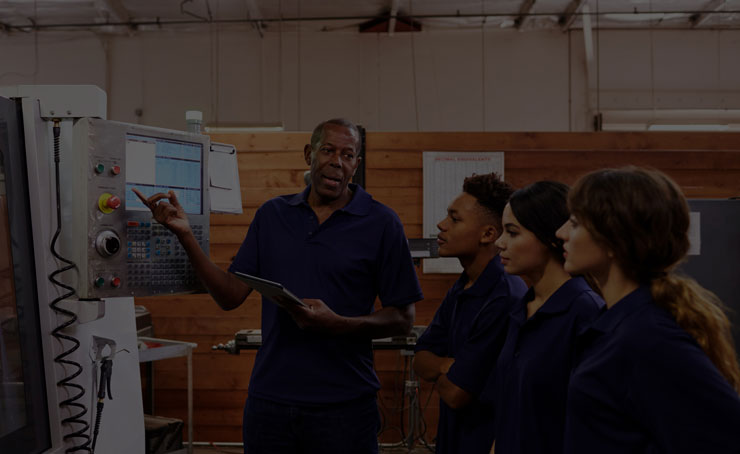Be a Blog Subscriber
Join thousands of manufacturing leaders and professionals who get the Accelerate blog delivered straight to their inbox

 Earlier this fall, thousands made their way to FABTECH 2021, a welcome in-person gathering after a pandemic-required sabbatical.
Earlier this fall, thousands made their way to FABTECH 2021, a welcome in-person gathering after a pandemic-required sabbatical.
This year’s FABTECH featured a powerful lineup of visionary leaders transforming the future of manufacturing. These manufacturers are increasingly integrating technologies like automation, artificial intelligence/AI, and data analytics into all aspects of how they operate, from the production floor to the supply chain.
Yet one topic of conversation outweighed all the others in terms of urgency: how to attract and retain skilled tradespeople.
Simply, there are too many open jobs and not enough skilled individuals to fill them. Of course, this is a problem industry-wide — and beyond.
According to a recent article in The FABRICATOR, the metal manufacturing economy continues to gain steam but there are major workforce challenges. Their 2021 “What Keeps You up at Night?” survey reports that metal fabricators are faced with the chance to grow their businesses, but they can’t find the people to help them do that.
More than half of the survey respondents said that they planned to add some sort of automation during the next 12 months.
The introduction of new technology necessitates training to enable employees to use the new equipment to its full potential. This can be a boon to employers who invest in learning and development.
Whether for new hires or incumbent employees, incorporating training opportunities tied to a clear career path is one way to attract and retain a skilled workforce.
At the FABTECH Knowledge Bar, I presented “Best Practices in Retaining Employees,” where I outlined some practical strategies to help companies become the employer of choice.
Today, the way to attract manufacturing employees is through social media ads, visibility in education, employee resource groups, engagement activities, community involvement, and recognition programs.
It is critical to demonstrate your organization’s unique culture from the very first interview. Share your mission and vision, conduct a tour, and make introductions to others in your company so that candidates feel an immediate positive connection.
Companies are also starting to offer novel perks such as pet insurance, bereavement leave and the ability to buy vacation. Consider what types of out-of-the-box benefits might build goodwill with your employees.
When it comes to retention, I like to say the key is around the Three C’s:
Compensation is going to figure into that equation too.
To support these areas, best practices before and after the first day include:
Manufacturers know well how turnover negatively impacts productivity and culture. Plus, it can be an enormous expense, sometimes running in the millions of dollars. And don’t forget to calculate those hidden expenses from temporary staff to productivity loss.
Building a strong learning culture can help combat turnover. High-impact learning organizations invest in employee engagement personnel and tools to continually evaluate and develop their workforce.
A focus on people is how leaders stay competitive in this ever-changing tech world.
We can help you integrate best practices at your organization. Please reach out to us at 866.706.8665.
Join thousands of manufacturing leaders and professionals who get the Accelerate blog delivered straight to their inbox